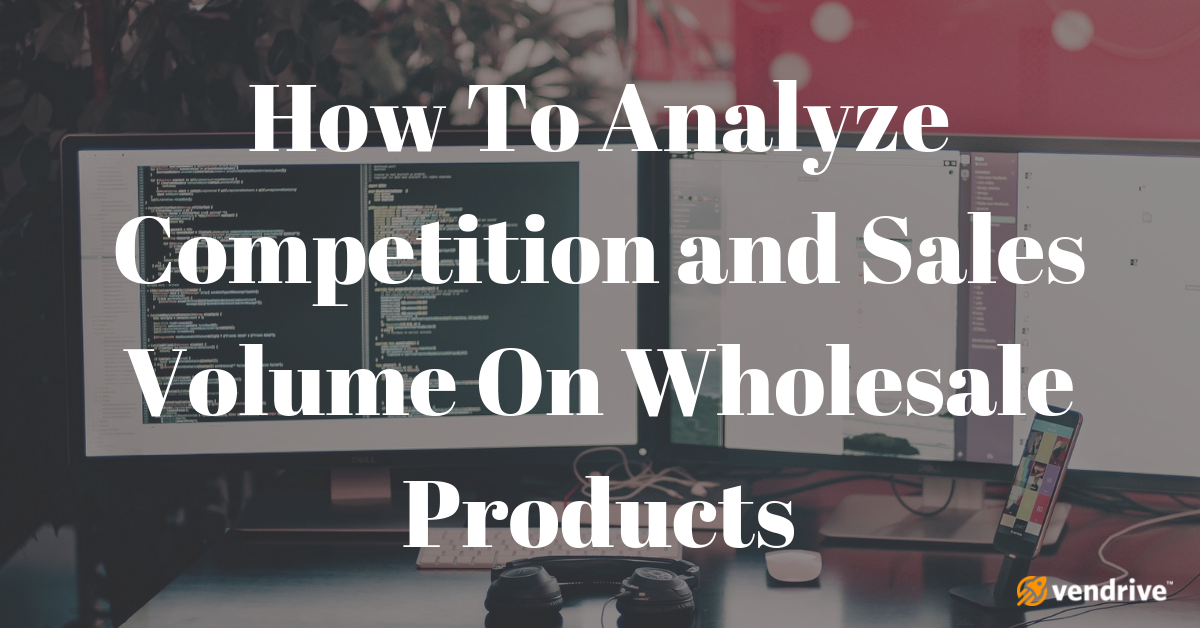
Knowing how to effectively source wholesale products is just the first phase of analyzing potential products.
Once you’ve zeroed in on a specific product, you’ll want to analyze how many units you could move each month with the current competition and sales volume.
Before we start actually analyzing sales volumes, we need to first understand how to calculate how many sellers we’re actually competing with.
Who you’re actually competing with on a listing
I’m sure you’ve found an amazing potential product on Amazon and noticed how many sellers were on the listing. Typically, it’s enough to drive you mad. There’s a massive difference between sellers on a listing and sellers you’re actually competing with.
For the most part, I really don’t care how many sellers are on a listing. Instead, I care about how many of those sellers are competitive.
The two main factors that determine Buy Box percentage are FBA and Price. The only sellers that are competitive are those that sell FBA and are within 2% of the Buy Box price.
This little filter can typically eliminate 90% of sellers on a listing – making it much more attractive for us to carry.
Here’s an example of a product that would normally scream too much competition.
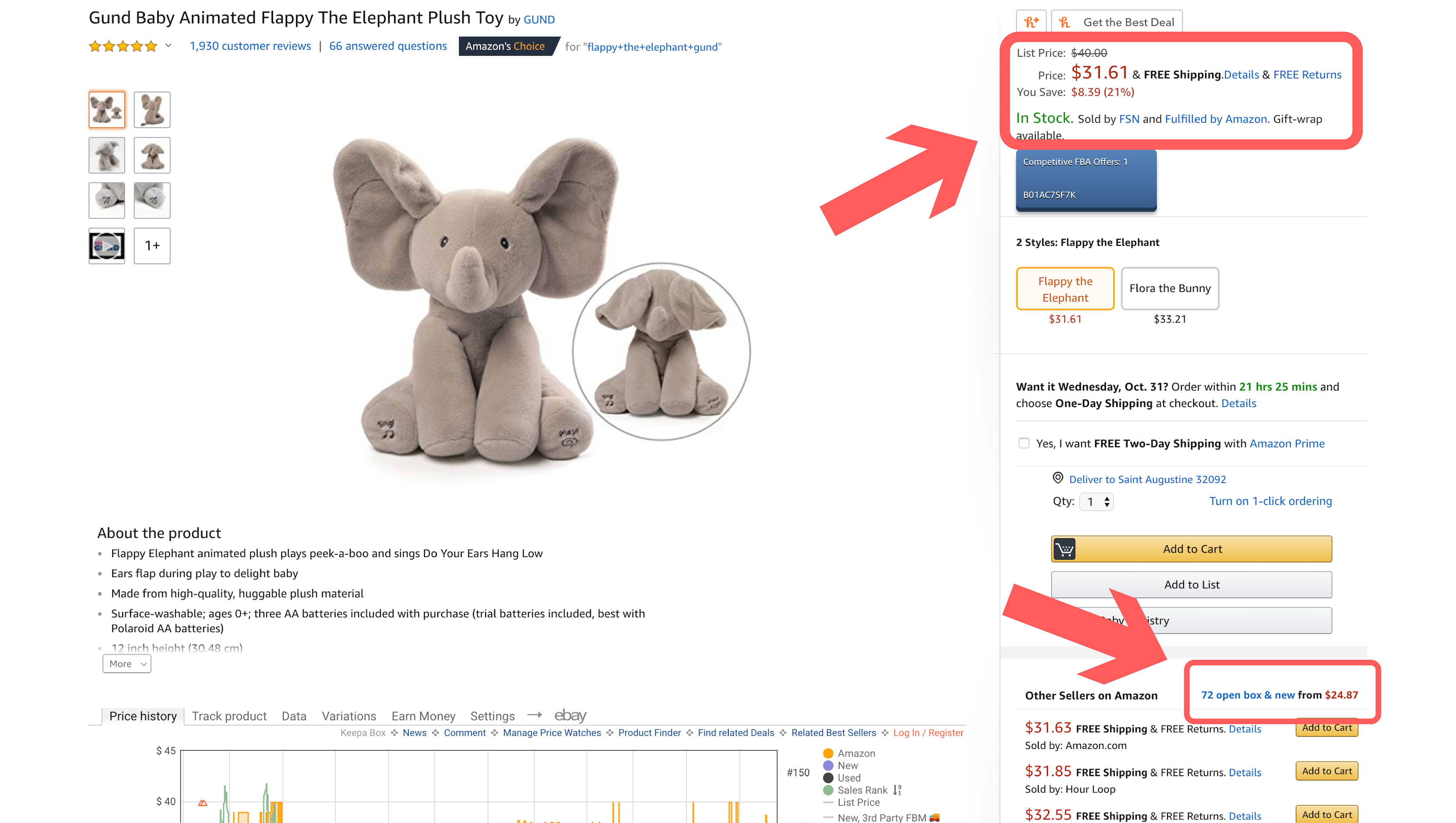
We can see there are currently 72 sellers on this listing and that the Buy Box is FBA.
The current Buy Box price is $31.61 and if we multiply that price by 2% that gives us a max price of $32.24.
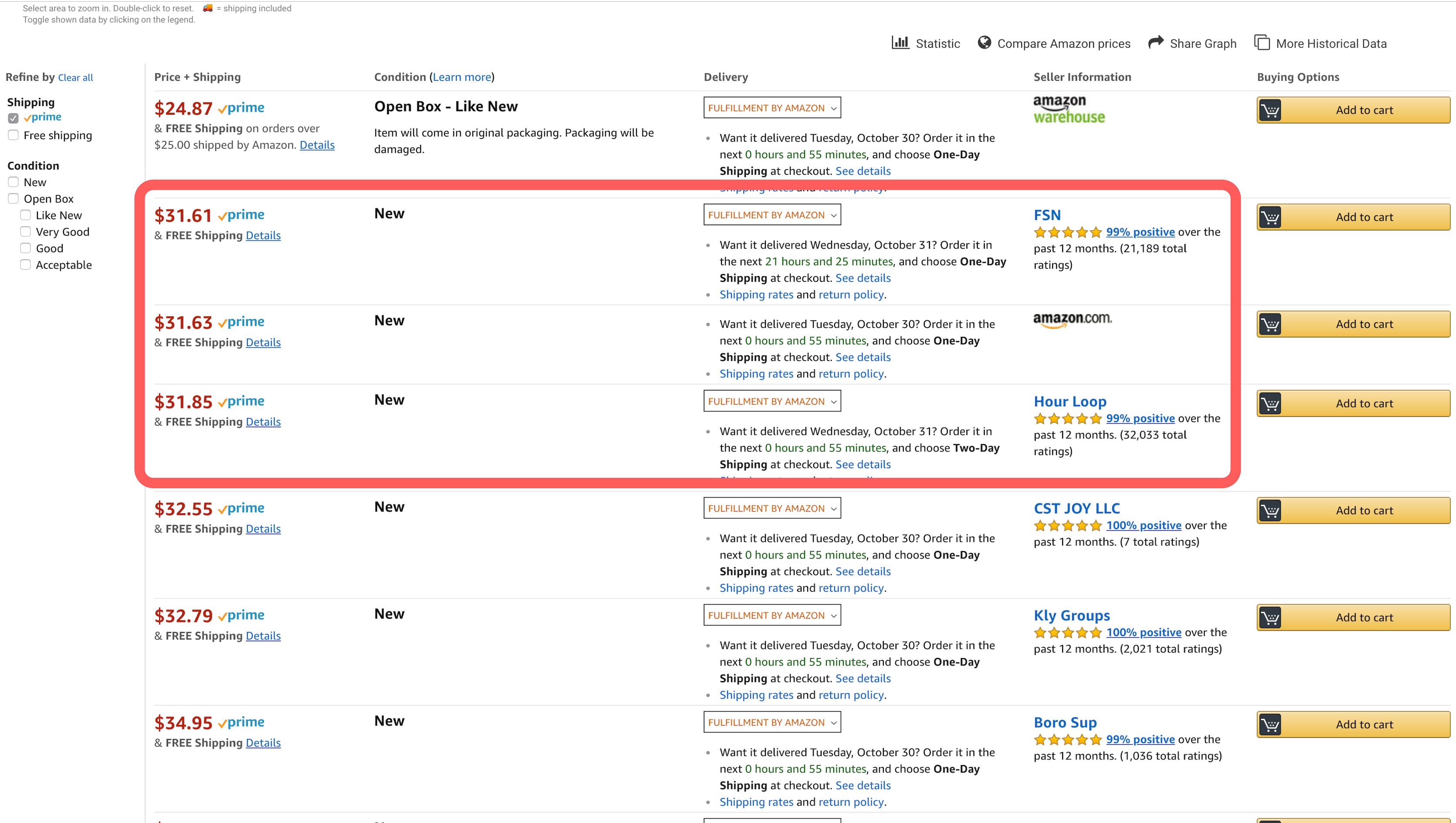
Out of the 72 total sellers on this listing, only 3 are actually within the Buy Box. Rather than measure competition by how many sellers are on a listing, measure it based on actual competition.
This is going to matter greatly in the next section.
Calculating the average sales volume
Now that we have the actual number of sellers competing on the listing (+ ourselves) we can more accurately calculate sales volumes. Because rankings change so much on listings, I personally like using the Average sales rank to calculate potential sales volumes for each product.
To calculate average sales volumes, we’ll be using two free tools:
First, we’ll need to use Keepa’s Chrome Extension to get an average BSR for the product. Once installed, the extension will show a chart directly below each product on the listing page.
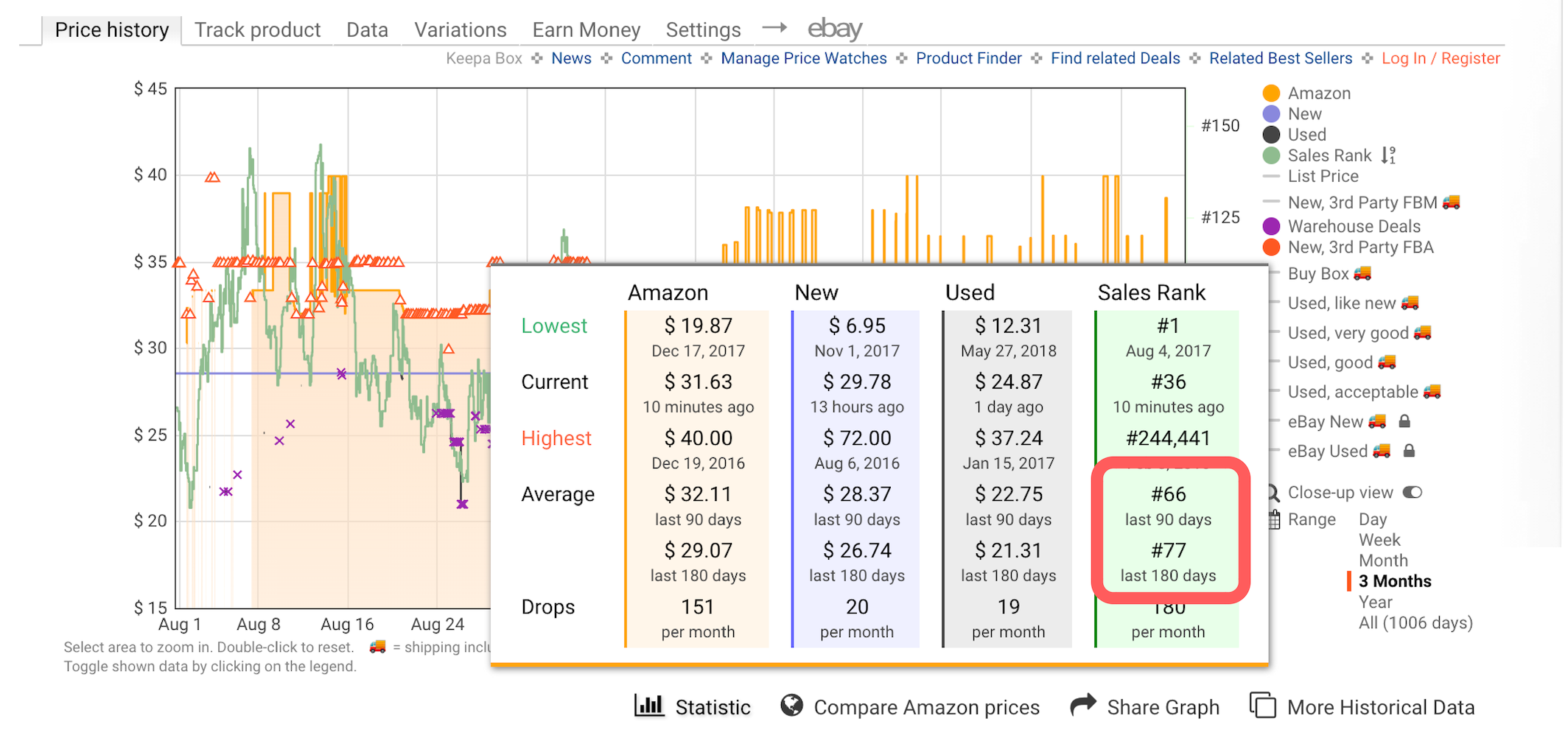
Forget that Amazon is on this listing for this post. Looking at the Statistics for this product, we can clearly see the average BSR for 90 and 180 days. Let’s use 180 days as our average BSR rank for calculating our average sales volume.
The average BSR for 180 days is 77. This is where Jungle Scout’s tool comes into play.
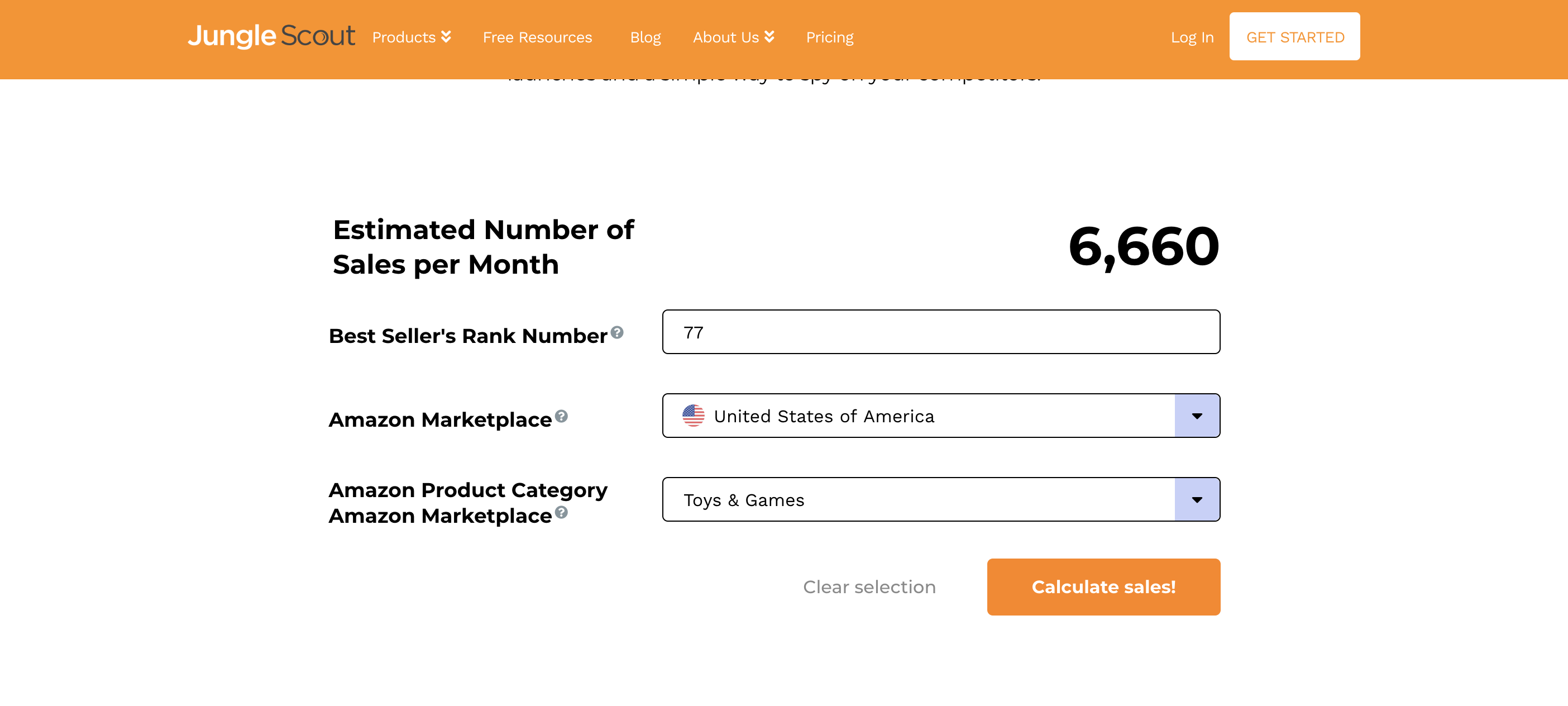
Once on their page, we’ll go ahead and add our 180 day average BSR, the marketplace we’re selling on (U.S. for us) and the category of the product.
Jungle Scout will then calculate the best-estimated sales based on the category and rank you fed the tool. It’s important to remember that the number they give you us the total sales estimates per month.
To see how many units we can estimate selling – assuming we can share the Buy Box equally – is the following Equation:
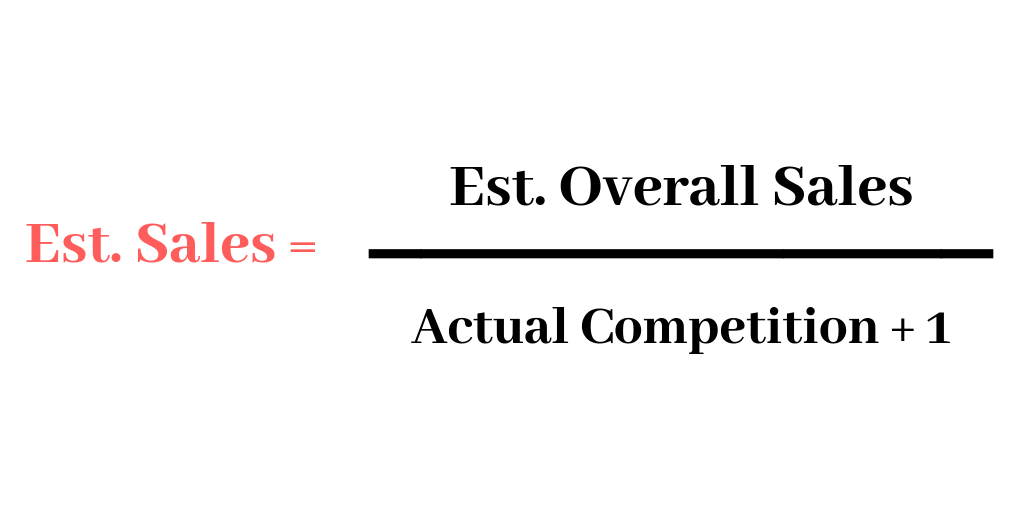
For our example, the equation would be the following: 6,660 / 3 + 1 = 1665 units per month. That’s how many units we can expect to sell each month on average, assuming the number of competitors doesn’t change.
As more sellers come on the listing, the fewer units we can sell per month.
We’ve mentioned placing test orders before. The reason we wouldn’t immediately place an order for 1665 units is that this is just an estimate.
Placing a smaller order of 100 units and then using actual sales data to forecast future sales is more effective and helps you mitigate potential risks.
This is where a tool like Restock Pro comes into play.
This is the easiest way to quickly estimate sales volumes for any product before placing an initial or test order with a new supplier. It can help you prioritize specific suppliers with much higher sales volumes over others and ultimately make better buying decisions.
To sum everything up….
- Determine how many sellers are actually competing for the Buy Box.
- Get the Average – 90 or 180 day – BSR rank and calculate total monthly sales using Jungle Scout’s Sales Estimator.
- Divide the total number of sales by the total number of competing sellers on the listing plus yourself.
- Use sales forecasting using a tool like Restock Pro to more effectively estimate sales volumes after you purchase the product.
- Remember this is just an estimate.



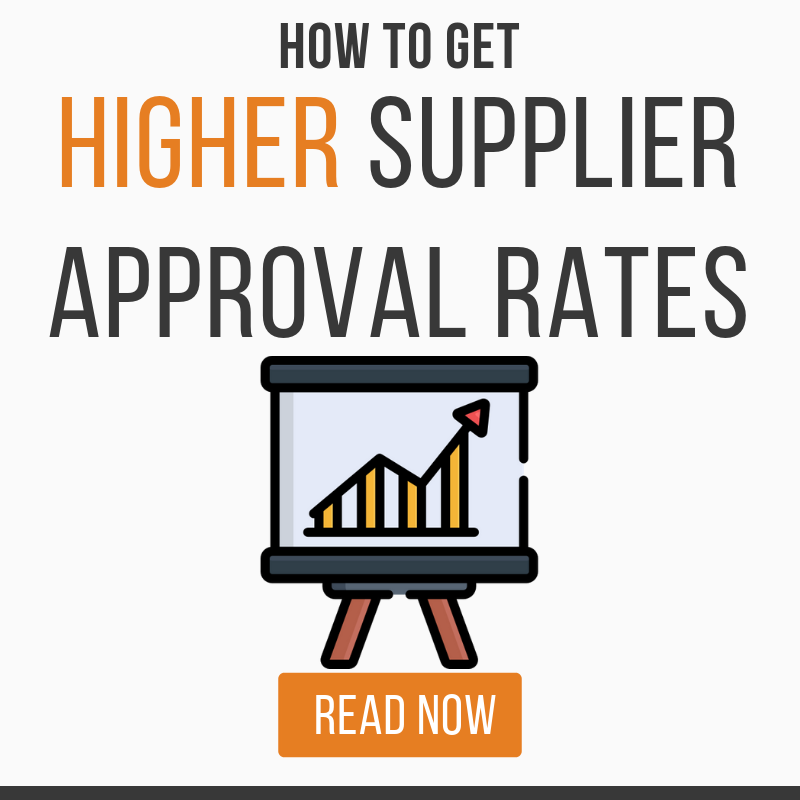


About The Author: Dillon Carter
Hi, with James, we're building Amazon tools that we wish we had when starting our own companies. We love tech, coffee, building systems and all things Amazon.
More posts by Dillon Carter